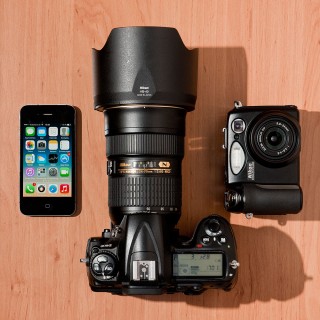 The equipment of a photographer is always of importance. Unreflected statements of some photo artists say, that gear can be neglected and that it is all about the brain behind the camera. But this is just self-pr and mostly serves for their personal image as creators of culture.
The equipment of a photographer is always of importance. Unreflected statements of some photo artists say, that gear can be neglected and that it is all about the brain behind the camera. But this is just self-pr and mostly serves for their personal image as creators of culture.
This statement is true only until it comes to choosing the appropriate tools. How important a good photo equipment is, always depends on the photography genre you are heading for. In the following we have associated the requirements of a few different photography styles with nessecary equipment features.
Interesting are the results for real estate photography in the end …
The Action Photographer
If your are a photo journalist, wedding photographer or a war reporter you need a reliable and robust camera, with a high frame rate and an excellent signal processor as well as fast lenses with a wide range of focus lengths and quick autofocus. In addition to that powerful speed lights are part of the basic gear. Furthermore the equipment has to be very mobile. For this they need a well organized and comfortable photo bag, which allows a quick access to the whole gear.
(purchase price: approx. 12.000 EUR)
The Detail Photographer
A professional fashion photographer or commercial photographer usually loves to work with a high resulution camera. A big sensor is responsible for fine nuances in high gloss prints and for minimizing image noise. Such medium format cameras mean potential investments, hence they also need high resulution quality lenses. In addtion to that these photographs are very often made with the support of artificial light, thus as mobile or stationary studio will be required.
(purchase price: approx. 60.000 EUR)
The Moving Photographer
A photo reporter, landscape photographer or travel photographer works similar to a photo journalist but focuses more on sharpness, details and composition. He takes his time for shooting, thus he would not need a fast camera but nevertheless a high resolution gear that can be moved easily. In addition to this he needs a sturdy tripod to give his camera a good amount of stability for long time exposures. He works mobile and carries his stuff long ways. Here a good backpack is of great help.
(purchase price: approx. 4.000 EUR)
The Photo Artist
Photo artists and street photographers very often catch the action of a moment and vary the conserved reality to their imagination by certain shooting techniques or subsequent retouching procedures (motion blur, black and white, contrast grading etc.). This can very often be achieved with a simple camera (many are successful even with their smart phone) – with a better compact camera they are on the safe side. Mobility can be neglected, since a small camera can be taken with you all the time.
(purchase price: under 1.000 EUR)
Equipment for Real Estate Photography
Real estate photographers and architectural photographers very often embody a mixture of the styles named above. They want to show reality as close as possible (journalistic) and show the subject matter in a very impressive manner (commercial). For sharp and detailed images they take the appropriate amount of time (landscape). In post production they polish their images (artistic). Also, they chose their gear to certain preferences:
Important
- camera with a high dynamic range and a good amount of a resolution reserve
- wide angle lens with best quality even into the corners
- absolutely sturdy tripod
- bags / suitcases for good organization and portability
- optional: adjustable speed lights with a reliable remote control
Less imporant
- great mobility of the gear
- high speed of camera and lens
- wide focal range (tele-wise)
Here you can find our recommendation for good basic equipment.
The Brain Thing, Photo Gear … Plus a Third Ingredience
Ofcourse a photographer has to switch on his brain. Otherwise instead of good photographs he will produce mediocre snapshots of which just a few lucky shots may find some notice. He has to
- recognize the scene, anticipate situations and pre-visualize possible image effects,
- judge the technical pre-conditions on site (light, shadow, movement of subject or camera etc.),
- adjust his equipment according to these technical pre-conditions.
In this respect the brain behind the camera is important indeed, but it is nothing without appropriate gear. And there is also a third ingredience for a great photograph, about which we didn’t speak at all in this article: Without a great subject matter every photography effort is for nothing.

